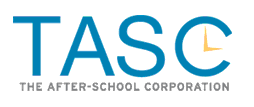 In 2011, The Cooney Center formed six action teams, based on geographical location. The teams were charged with building promising practices and scalable models of the ways that media, and particularly digital media, can promote children’s learning in environments outside of school. These teams were an integral part of the Learning From Hollywood Forum where they had the opportunity to network with industry and policy leaders across media, technology, education and philanthropy, and where each team walked away with hard deliverables to this mission. The After-School Corporation is part of a New York City Action Team, along with the Hive Learning Network and the New York Community Trust. Since the Forum, the team is collaborating on a New York City Hackasaurus project
In 2011, The Cooney Center formed six action teams, based on geographical location. The teams were charged with building promising practices and scalable models of the ways that media, and particularly digital media, can promote children’s learning in environments outside of school. These teams were an integral part of the Learning From Hollywood Forum where they had the opportunity to network with industry and policy leaders across media, technology, education and philanthropy, and where each team walked away with hard deliverables to this mission. The After-School Corporation is part of a New York City Action Team, along with the Hive Learning Network and the New York Community Trust. Since the Forum, the team is collaborating on a New York City Hackasaurus project
Drawing on ideas shared by many of the Action Teams, The After-School Corporation convened a forum this past summer in New York City to discuss how schools and community organizations could leverage their partnerships to expand digital learning into the country’s vast network of after-school programs, summer camps and expanded learning time schools. The United States has invested in building a national infrastructure of these organizations in the past two decades, as evidenced by statewide and citywide after-school networks all across the country and a workforce of about 1 million after-school educators. It’s time to ensure that as schools find ways to use technoloogy effectively to advance learning, so do youth-serving organizations that provide informal learning opportunities to millions of kids beyond traditional school hours.In New York, some of the most groundbreaking work in digital learning is being led by such organizations, many of them members of the HIVE Learning Network NYC, a partner in the New York City Action Team.
But many traditional youth-serving organizations are on the sidelines, interested but lacking infrastructure, tools or staff training. TASC Has published a white paper and posted this video in which we make a case for education leaders to actively work with these organizations to close the digital divide. This is one way to make sure that in the movement to expand learning with technology, the poorest kids don’t get left behind once again.
We’d love to hear your feedback and thoughts on next steps.
Resources:
Where the Kids Are: Digital Learning in Class and Beyond. Expanded learning time schools, after-school and summer programs offer the ideal time, places and conditions to equalize and advance technology-enabled learning.




